'This Ain't No Disco': Eric Mingus and Elliott Sharp at 2024 Big Ears Festival
- Oops!Something went wrong.Please try again later.
There was a head-on collision in my brain on Christmas Eve involving two songs, one originally sung in Latin dating back more than 1,200 years, and the other 45 years old, so of its time and milieu, it is permanently time-stamped in my memory as “1979: Alphabet City.” The collision left my head ringing like a bell.
Early in the day, I had chosen not to go into Sunday morning service at Chapel on the Hill. I haven’t in several months. I still go and hang out in the fellowship hall for coffee, because my friends there are important to me, but I’m too fidgety for sermons these days.
So I sat to drink coffee and listen to the latest edition of the most important podcast I’ve come across. It’s called “Meaningful People,” and the interview was called “The Uncensored Truth about Oct 7,” featuring Yossi Landau, a 30-year veteran of ZAKA Search + Rescue, the mass casualty disaster response team known around the world. And then I watched a 52-minute video documentary released just the night before by Israeli filmmaker Dan Pe’er, called “#Nova.” It’s about the Supernova rave that was mercilessly attacked on a morning that will be talked about a thousand years from now.
I promise, this article is a profile of two musicians who are coming to the Big Ears Festival in three months. Hang with me. A connection is looming.
The Supernova documentary consisted of smartphone videos shot by the rave partiers intercut with GoPro videos shot by Hamas killers, both in the hours leading up to the attack and during the massacre and kidnapping frenzy itself.
It was the most chilling thing I’ve ever watched, even intentionally edited to not show the unspeakable blood and gore described by Yossi Landau. And as I sat in Fellowship Hall at the Chapel on the Hill, a sanctuary that has stood since right before the dawn of the Nuclear Age, as the documentary ended, I tried to wrap my head around terrorists who, after two rounds of hostage releases, still hold more than 100 hostages for ransom, hostages who will likely never be freed alive because of the testimony they could give against the tormentors, torturers, and rapists in green headbands.
Then, from a room down the hall, I heard my 10-year-old son plinking on a piano, sounding out the Christmas hymn, “Veni Veni Emmanuel.”
“Oh come, oh come, Emmanuel/and ransom captive Israel ...” Tears suddenly burned streaks down my face as, like two locomotives screaming toward each other, the head-on collision occurred when another song’s lyrics ran over the hymn’s. “Heard of a van that is loaded with weapons/packed up and ready to go ...”
It’s not well known, in the US at least, that the SuperNova rave was not a planned target of the Hamas onslaught on 7 October. None of the written instructions found days later in the pockets of scores of terminated terrorists said, “Kill everyone at the rave.” That the rave lay in the path of the terrorists, who descended from the morning sky like the Wicked Witch’s flying monkeys in “The Wizard of Oz,” not to fly off with Dorothy and Toto, but to rape, kill, or kidnap anyone they saw, was pure tragic happenstance ... and a mind-boggling security mistake.
A brief clip in the documentary shows a 20-something young man running in circles and yelling “I’m so terrified! I’m so high!”
For many years I supported myself as a stage engineer at large concert events, and I worked a fair number of raves. If you’ve never been to a rave, “#Nova:” will give you a sense of what they are like. SuperNova was intended to last 24 hours. It drew several thousand revelers to a spot in the Negev, miles from any urban centers, but near the clusters of kibbutzim that have turned the desert into agricultural oases, where they could freely dance and drink and do Ecstacy, a compound that every American college kid knows as a dance drug.
At American raves, kids don’t mix Ecstasy and alcohol. They know better, so they mix Ecstasy and water. But at SuperNova, there were open bars under tents. Alcohol and Ecstasy are not mentioned in the documentary, but as rockets started landing nearby and the Iron Dome intercepted hundreds in mid-air and paraglider pilots started automatic gunfire from the sky and young women were dragged by Islamists on mopeds two miles west to the border of Gaza. ... “I’m so terrified! I’m so high!” says it all.
“High on a hillside, the trucks are rolling / Everything’s ready to roll / I sleep in the daytime, work in the nighttime / I might not ever get home...”
“This ain’t no party, this ain’t no disco / This ain’t no fooling around / This ain’t no Mudd Club, no C.B.G.B. / I ain’t got time for that now.”
_Talking Heads. 1979. The Lower East Side. Ed Koch’s NYC.
“Life During Wartime” from the album “Fear of Music.” It’s like a crystal ball.
“Trouble in transit, got through the roadblock / We blended in with the crowd ...” Many of the Hamas terrorists wore Israeli military uniforms.
“Can’t write a letter, can’t send no postcards / I ain’t got time for that now ...” No time for postcards, but “#Nova:” shows how many real time text and email threads were recorded between the startled revelers and family members back in Tel Aviv, Haifa, and Jerusalem as the murderers overwhelmed the desert party site. Firsthand, as-it-happened accounts of unimaginable evil, by people who had been dancing since before midnight, but were now trying to hide in open fields as the shadow of death approached.
That shadow touched 350 partiers. It’s biblical. What happens in Israel does not stay in Israel. What happens in Israel changes the world.
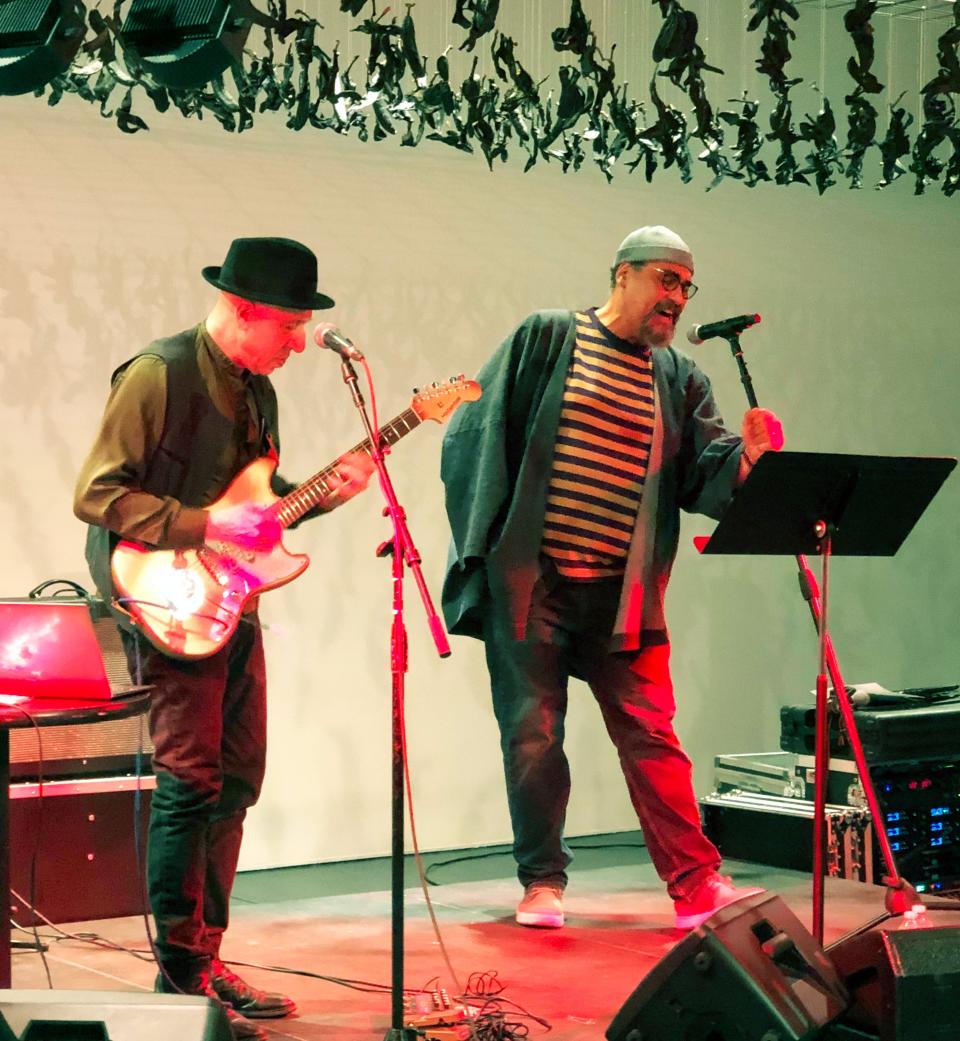
... And now the Big Ears Festival connection
This ain’t no party. This ain’t no disco. Those clairvoyant lyrics come from the late-Seventies New York that was the breeding ground of so many of the artists who have made the Big Ears Festival the most highly respected art-music smorgasbord to be found anywhere. An idea of why the arts of the Seventies in NYC seem so vibrant when they are revisited in the 2020s in Knoxville came to me in the head-on collision.
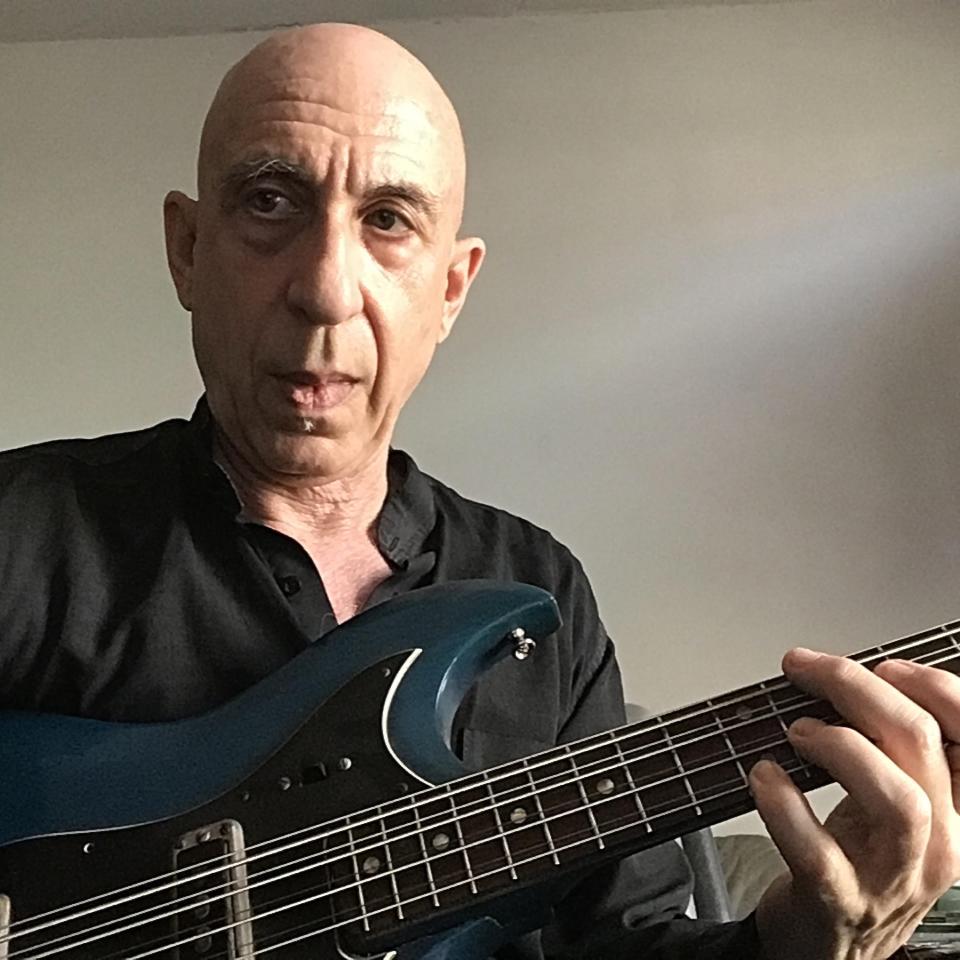
It’s because we’re in a spiritual conflagration, a war of the mind that started after Vietnam and has simmered in and out of sight ever since. It’s why things feel so polarized now. Where we’re at now started 50 years ago. Just ask Patti Smith. Ask John Zorn, the Kronos Quartet, David Byrne, or David Murray. They’ve all performed at Big Ears. Ask Laurie Anderson when she comes here in March. In many ways, Big Ears is the fruition of the 1970s, finally coming into focus.
Two of the Below-14th-Street art scene’s most interesting exponents are putting their legacies on view at Big Ears 2024.
Elliott Sharp and Eric Mingus.
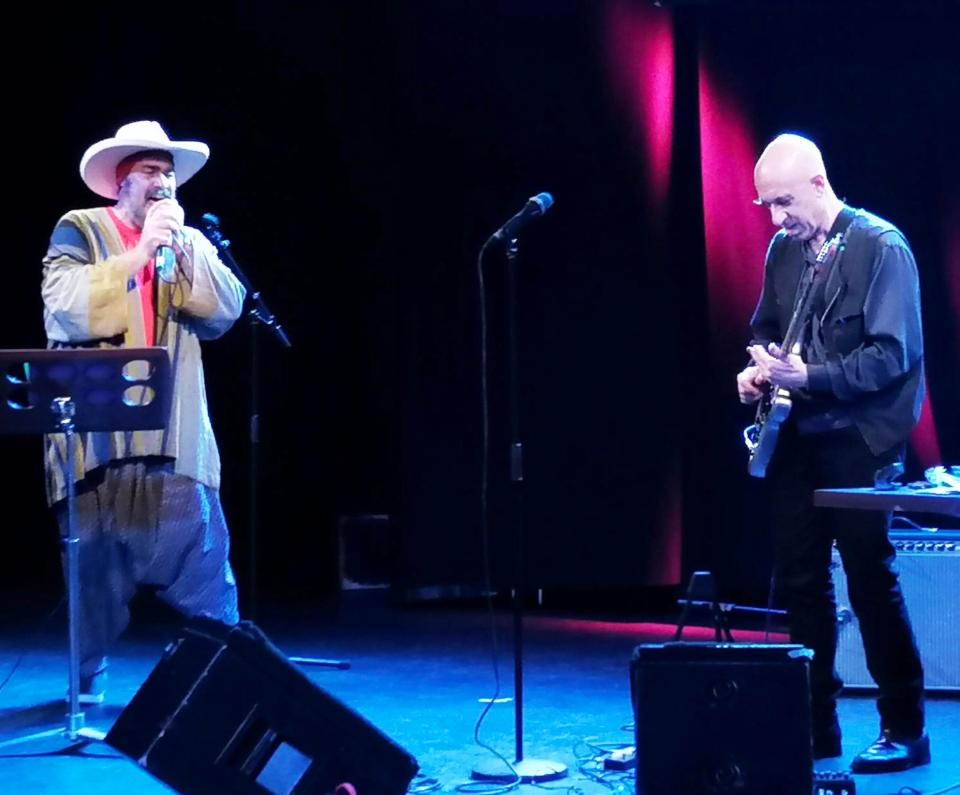
When Sharp and Mingus walk out to their mikes on stage, you need to know that anything, anything can happen. They are as unbound as any pair of free minds on the planet. Unbound by the past, unbound by your expectations, and unbound by any convention. They have collaborated for more than two decades and are the longest-running odd couple I know.
Elliott Sharp is an extremely complex dude. He was probably as cerebrally intense when he was 4 or 5 as he is now. He embodies and champions every aspect of what used to characterize the “avant garde” in a way that still gives the term some life. Sharp is a composer, shaper, and shaman, an instrument designer and constant performer with more than 85 records reaching from free jazz to no wave, from improv to nouveau classical.
The list of his fellowships and prizes, art museum installations, duos, credits as producer, film scores, soundtracks, operas, and essays pales before the sheer mountainous volume of his music making.
The only way to understand Elliott Sharp is to listen to his most recently released recording. Or see him live on stage. His arc through the scene is so rapid and immense, there’s little to learn from where he’s been. It’s all about where he’s going.
As I write this, I’m listening to his latest 13-cut album, “Sixteen Seconds,” released two weeks ago. He describes it as “improvised pieces for electric guitars and most importantly, the original ElectroHarmonix 16-Second Delay, recorded in 1996 and mixed in December 2023.” All I can say is, to really take it all in, it helps to look it right in the eye. It’s beautiful, alternately cavernous and intimate. Original. For real.
When we talked two weeks ago, I asked Elliott if he thought the term “avant-garde” still means anything. “No.” He said younger composer/ performers aren’t willing to put in the sweat equity these days.
Eric Mingus certainly has. He was introduced to Knoxville last May at Yo-Yo Ma’s “Our Common Nature” event, an outgrowth of his research into his family’s connection to a Smoky Mountain treasure called Mingus Mill, not far from Cherokee, North Carolina. He’s a writer, composer, bassist, improviser, performer, and collaborator, but it’s his voice, in speech and in song, that you can’t forget. Eric Mingus’s voice is riveting.
As with Elliott Sharp individually, the Sharp/Mingus collaboration is best viewed at its leading edge, the latest release. So “Fourth Blood Moon” is on right now. The fifth cut, “Mr. Trouble,” just clamped down on me like an avant-funk bear trap. “Mr. Trouble is restless ... Holy Hell gonna rain down on ya, Holy Hell gonna come down on ya ...”
Three cuts later, in “Going Home,” Mingus channels Marvin Gaye, Gil Scott Heron and Levon Helm in the same breath, and then Elliott sends you down hidden hallways you don’t expect.
Try Mingus and Sharp’s 2022 album “Songs From a Rogue State.” It starts with “This is a Message,” and Mingus’s gospelly gravely power stops you in your tracks. “How long ... will this keep ... goin’ on?” The second cut, “Don’t Go Near the Water,” puts the beat so far forward it feels like flying. Seven more songs on the album send very deep roots into the bedrock of pre-industrial post rock-rap-funk-jazz.
Frank Zappa would love these records. This ain’t no foolin’ around.
Visit bigearsfestival.org for more about Elliott Sharp and Eric Mingus. Check out the full schedule.
John Job is a longtime Oak Ridge resident and frequent contributor to The Oak Ridger.
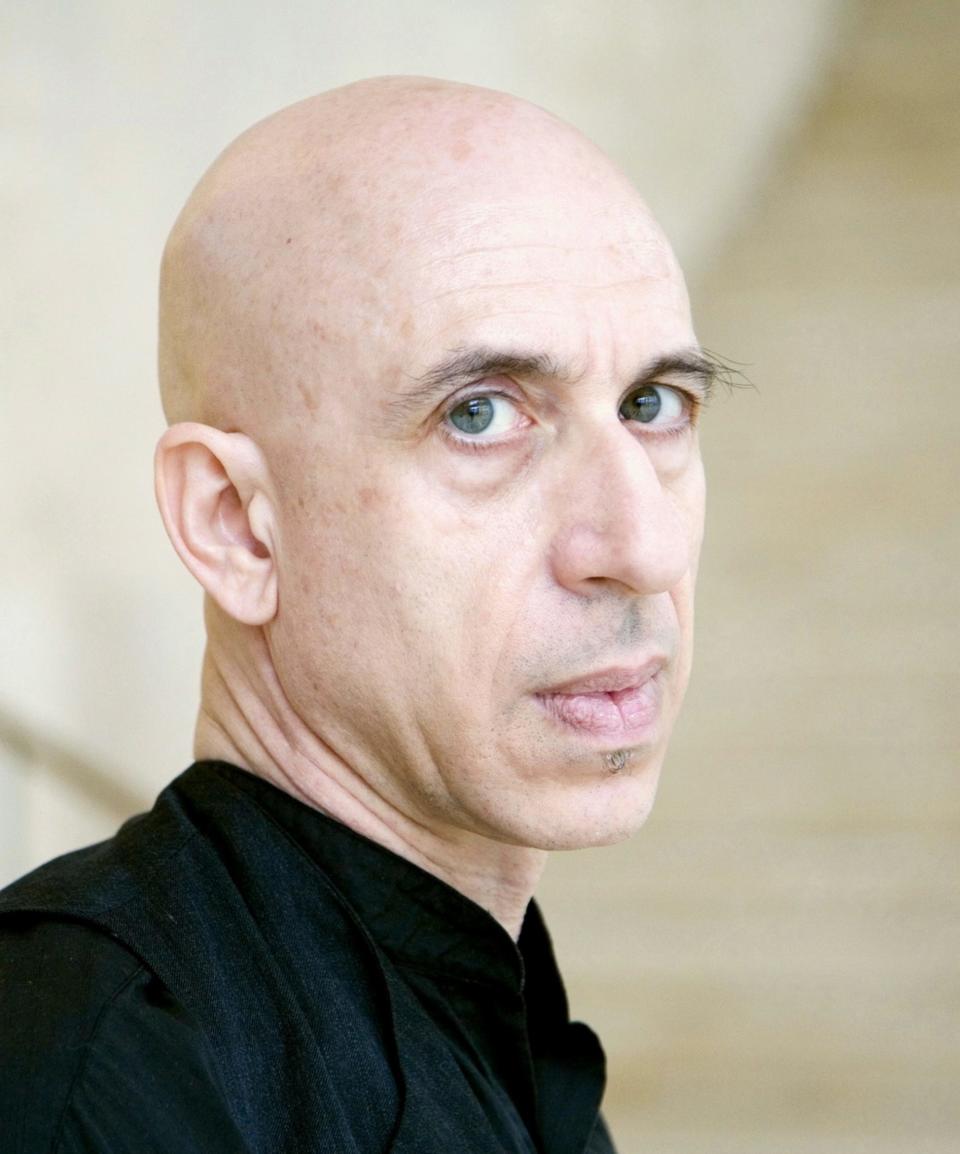
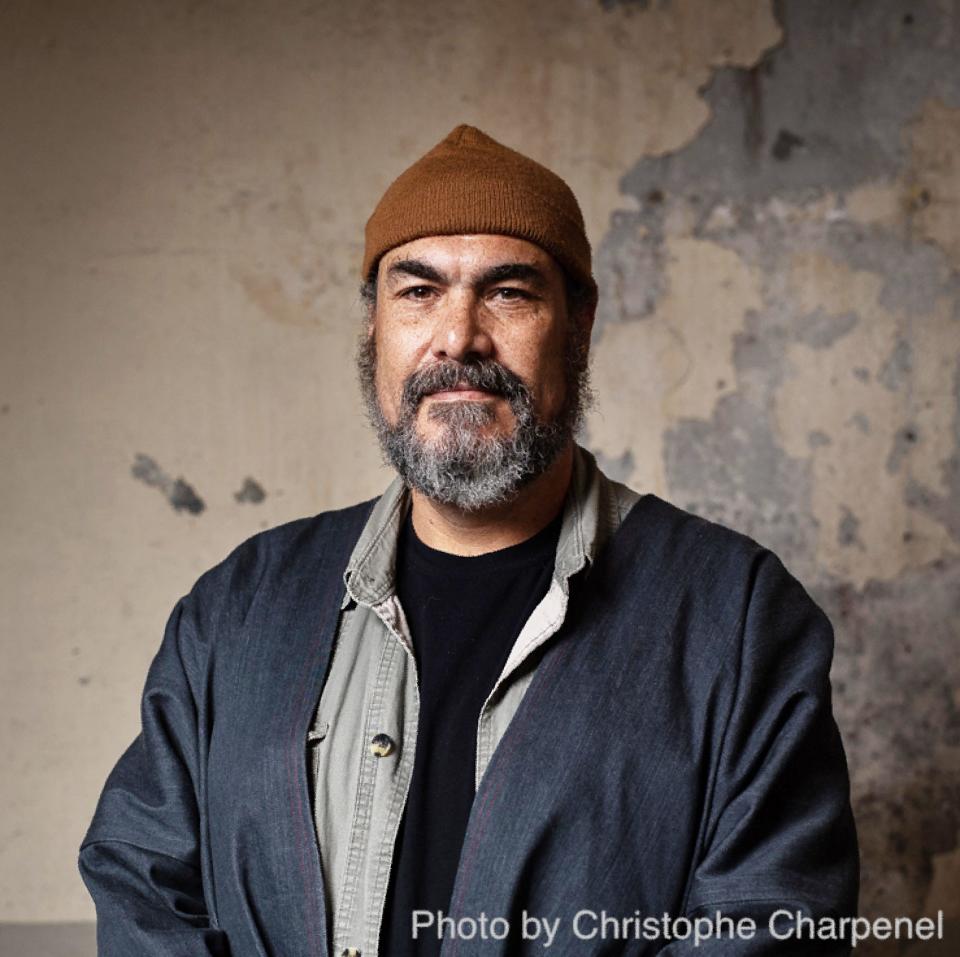
This article originally appeared on Oakridger: Eric Mingus and Elliott Sharp at 2024 Big Ears Festival

